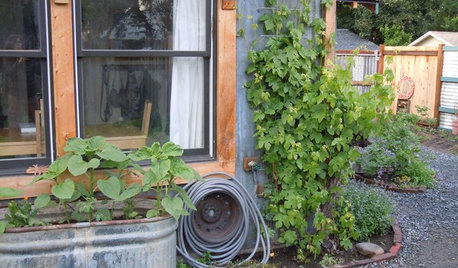What's Your Re-potting Tip?
Wish
18 years ago
Related Stories

CONTAINER GARDENS9 Tips for Creating an Artful Container Garden
Make your potted plantings a beautiful sight with these ideas for container types, plant groupings and more
Full Story
FARM YOUR YARDHow to Grow Vegetables in Containers
Get glorious vegetables and fruits on your patio with a pro’s guidance — including his personal recipe for potting mix
Full Story
GARDENING GUIDESHow to Declutter Your Garden Shed, Greenhouse or Potting Bench
Get those pots and tools sorted now, and you’ll be free to focus on your plants when spring arrives
Full Story
HOME TECHHigh-Tech Tips for Securing Your House While You're Away
Prevent burglaries when you're traveling by using the latest gadgets, apps and online services
Full Story
GARDENING GUIDES10 Tips to Start a Garden — Can-Do Ideas for Beginners
Green up your landscape even if you're short on time, money and knowledge, with these manageable steps for first-time gardeners
Full Story
BEDROOMS5 Tips to Wake Up Faster and More Happily
Shine when you rise even if you're not a morning person with these strategies to banish the brain fuzz
Full Story
SELLING YOUR HOUSE9 Tips for Living a (Semi-)Normal Life While Your Home Is Being Shown
Preparation, routine and treats help you make the house you’re selling presentable at a moment’s notice
Full Story
WINTER GARDENINGWinter Gardening: Ideas for a Dream Potting Room
Check out potting rooms that get indoor gardening right — and learn tips for creating your own
Full Story
KITCHEN DESIGN8 Kitchen Design Tips for Foodies
If you own at least one pricey knife and have a slew of kitchen tools, you’ll want to read this
Full Story
GARDENING GUIDESEdible Gardening Essentials: Tips for Traditional Hand Watering
Save the expense and hassle of a complicated garden system with a simple watering can or inexpensive hose add-ons
Full StoryMore Discussions






irina_co
korina
Related Discussions
What's your best tips for keeping flower pots from being stolen?
Q
I ordered too much! What sizes pots to re-pot in?
Q
Jade Re-Pot 2 Months After Re-Pot?
Q
SNOW is coming: I made a big pot of chili and you're all invited!
Q
Ron_in_BC
rujoanmi
WishOriginal Author
dchall_san_antonio
irina_co
Ron_in_BC
irina_co
rujoanmi
Ron_in_BC
TeaZing
Ron_in_BC
dchall_san_antonio
TeaZing
Ron_in_BC
rujoanmi
Ron_in_BC
irina_co
WishOriginal Author
irina_co
rujoanmi
irina_co
WishOriginal Author
rujoanmi
irina_co
Ron_in_BC
TeaZing
Ron_in_BC
irina_co